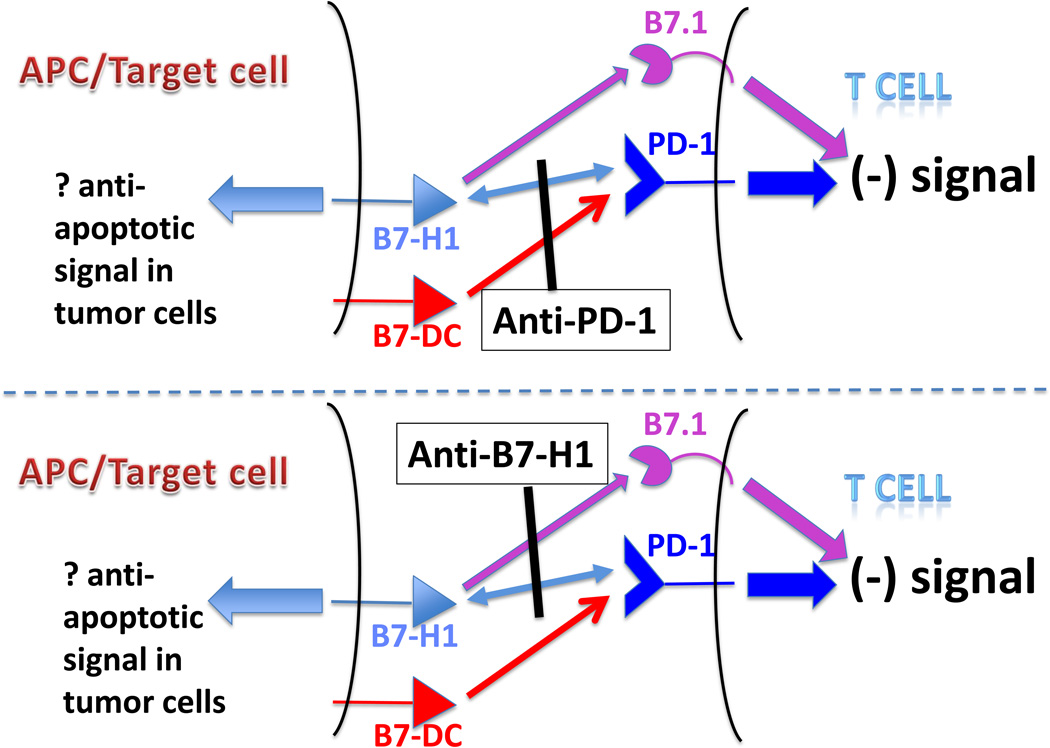Figure 2.
Anti-PD-1 and anti-B7-H1/PD-L1 antibodies (mAbs) might behave differently owing to their ability to block distinct sets of inhibitory interactions. Anti-PD-1 mAbs can block its binding to both B7-H1/PD-L1 and B7-DC/PD-L2, abrogating an inhibitory PD-1-mediated signal in T cells; however, the inhibitory interaction of B7-H1/PD-L1 with B7.1 on T cells is not affected. Conversely, anti-B7-H1/PD-L1 mAbs can block its interactions with both B7.1 and PD-1, but will not block the inhibitory interaction of B7-DC/PD-L2 with PD-1. Both anti-PD-1 and anti-B7-H1/PD-L1 mAbs could potentially block transmission of a retrograde pro-survival signal through B7-H1/PD-L1 into tumor cells [43]. APC, antigen presenting cell.

